Few garden plants can rival the beauty and fragrance of lilacs in spring. With their showy clusters of purple, pink, white, or even blue-hued flowers, lilacs (Syringa spp.) are a timeless favorite among gardeners. Not only are they stunning to look at, but their sweet scent can fill your yard with an irresistible charm that has inspired poets and gardeners for centuries.
Growing lilacs in your own garden is easier than you might think, but they do have a few specific requirements if you want them to thrive and produce those heavenly blossoms year after year. Whether you’re a beginner or an experienced gardener, this guide will provide everything you need to know about planting, caring for, and enjoying lilacs in your garden.
Why Grow Lilacs?
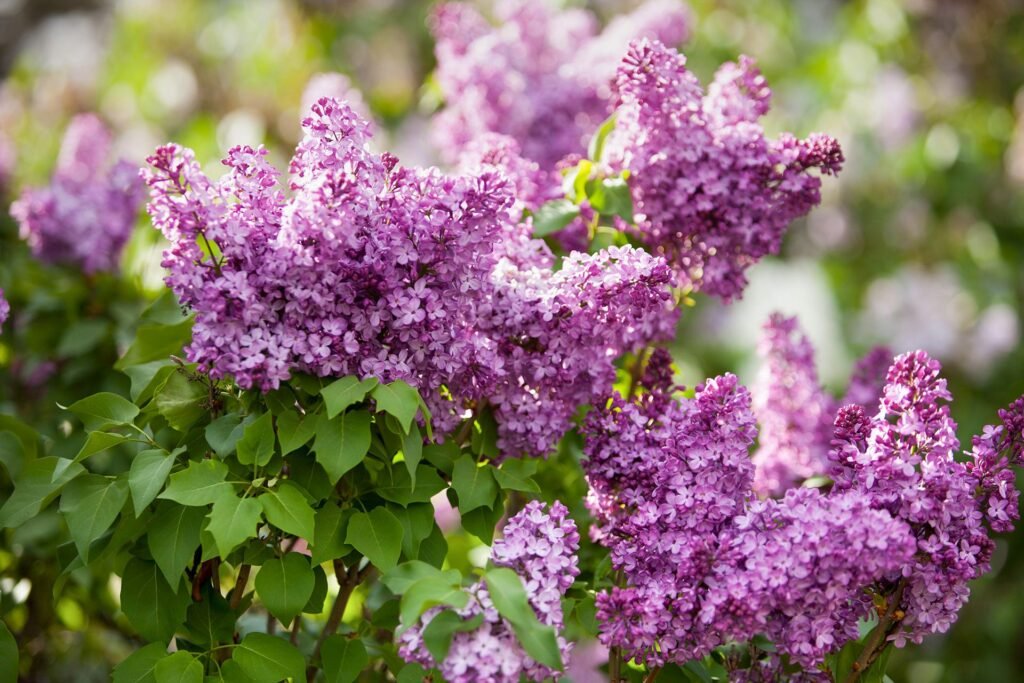
Lilacs aren’t just beautiful—they’re also hardy and long-lived. A single plant, if cared for properly, can last for decades, providing shade, privacy, and seasonal beauty. They’re also low-maintenance once established, making them an ideal choice for busy gardeners who still want a show-stopping plant in their landscape.
Some additional benefits of growing lilacs include:
- Fragrance: Their strong, sweet perfume is one of the most beloved scents of spring.
- Pollinator-friendly: Lilacs attract bees, butterflies, and hummingbirds.
- Versatility: They can be grown as hedges, stand-alone shrubs, or even small trees.
- Symbolism: Lilacs often symbolize love and renewal, making them a meaningful addition to any garden.
Choosing the Right Lilac Variety
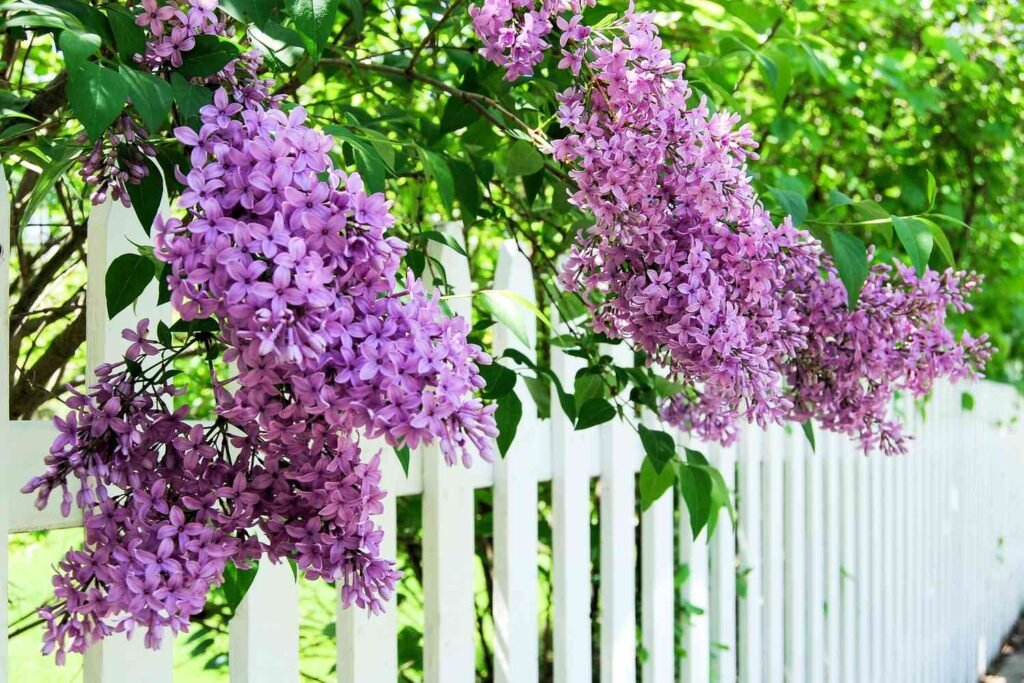
Lilacs come in many shapes, sizes, and colors. Choosing the right variety depends on your space and preferences.
Common Options:
- Common Lilac (Syringa vulgaris): The classic variety, growing up to 15–20 feet tall, with large, fragrant blooms.
- Dwarf Lilac (Syringa meyeri ‘Palibin’): Perfect for small gardens or containers, typically 4–6 feet tall.
- Japanese Tree Lilac (Syringa reticulata): Grows as a small tree up to 30 feet tall, with creamy-white flowers.
- Miss Kim Lilac (Syringa patula ‘Miss Kim’): Compact, hardy, and late-blooming with lavender-blue flowers.
- Double Lilacs: These produce extra-petaled, fuller blossoms for a dramatic look.
Ideal Growing Conditions
Lilacs are fairly hardy, but they have specific requirements for optimal growth and flowering.
- Climate: Lilacs thrive in USDA hardiness zones 3–7. They need a period of winter chill for flower buds to form properly.
- Sunlight: They require at least 6 hours of direct sunlight daily. Without enough sun, lilacs won’t bloom well.
- Soil: Lilacs prefer well-drained, slightly alkaline soil (pH 6.5–7.5). Heavy clay or soggy soil can lead to root rot.
- Spacing: Space plants 5–15 feet apart depending on the variety, to allow airflow and reduce disease risk.
How to Plant Lilacs
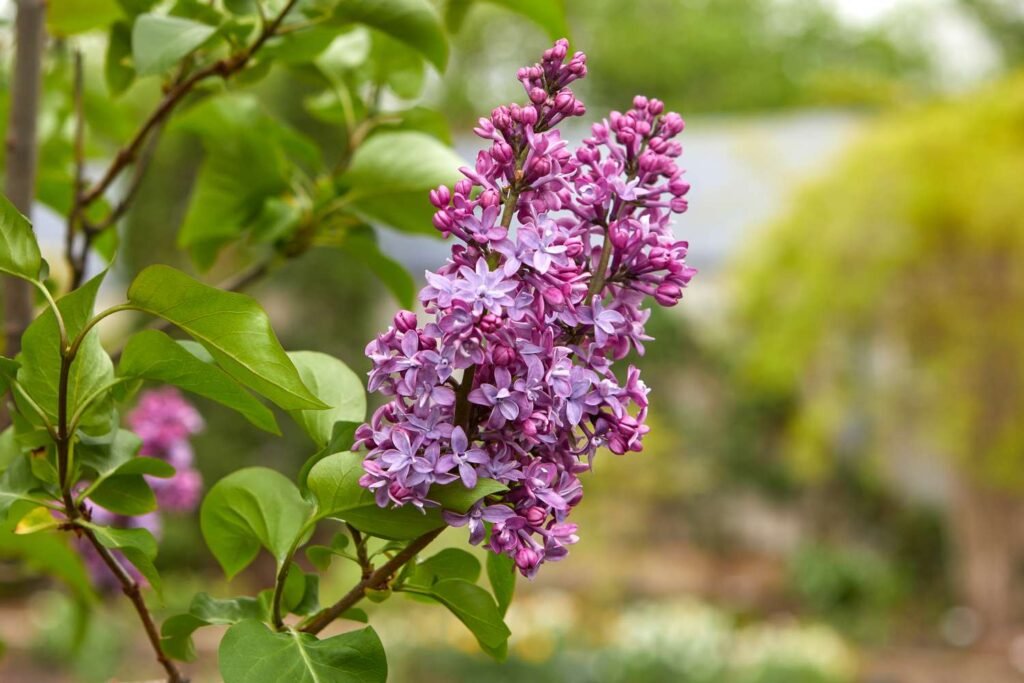
1. Choose the Right Spot
Select a sunny, open area with good air circulation. Avoid locations close to large trees that may compete for nutrients and water.
2. Prepare the Soil
Loosen the soil and mix in compost to improve fertility and drainage. If your soil is acidic, add lime to increase alkalinity.
3. Planting Steps
- Dig a hole twice as wide and as deep as the lilac’s root ball.
- Place the plant so that the top of the root ball is level with the soil surface.
- Backfill with soil, pressing gently to eliminate air pockets.
- Water thoroughly after planting.
4. Mulch and Water
Apply a 2–3 inch layer of mulch around the base to retain moisture and suppress weeds, but keep mulch a few inches away from the trunk to prevent rot.
Caring for Lilacs
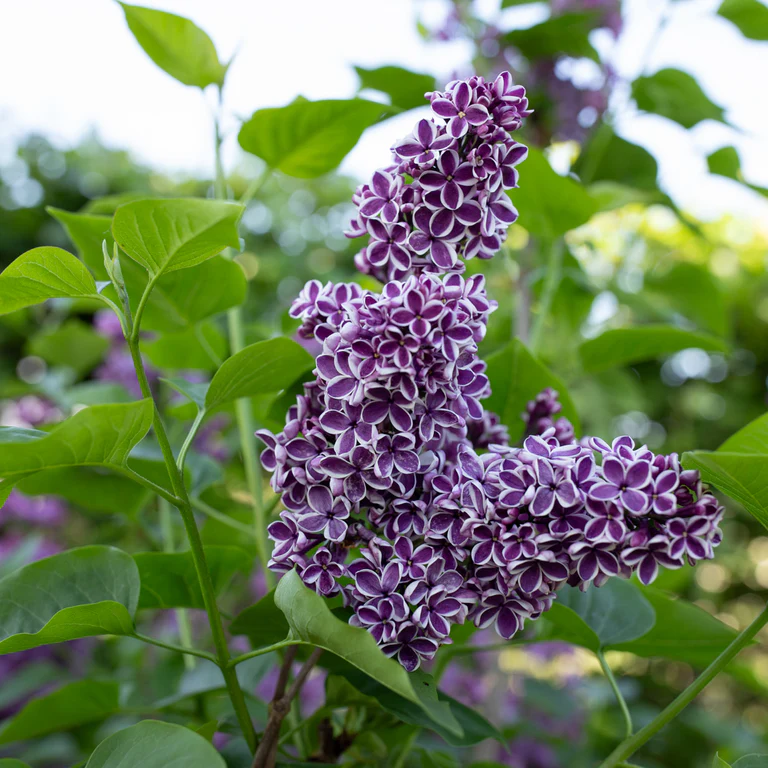
Lilacs are relatively easy to care for once established, but they do benefit from a little attention.
Watering
- Water deeply during dry spells, especially in the first few years.
- Once established, lilacs are fairly drought-tolerant.
Fertilizing
- Lilacs don’t need heavy fertilization.
- Apply a balanced, slow-release fertilizer in early spring.
- Avoid high-nitrogen fertilizers, as they encourage leafy growth at the expense of flowers.
Pruning
Pruning is one of the most important aspects of lilac care.
- When to prune: Immediately after flowering in late spring. If you prune too late, you’ll remove the buds for next year’s flowers.
- How to prune:
- Remove spent flowers to encourage more blooms.
- Cut back weak or crowded branches.
- Every few years, remove one-third of the oldest stems to rejuvenate the plant.
Pest and Disease Control
Lilacs are generally hardy, but they can be affected by:
- Powdery mildew: A white coating on leaves, common in humid weather. Improve air circulation and avoid overhead watering to reduce risk.
- Lilac borers: Insects that bore into stems. Remove affected branches.
- Scale insects: Small pests that can be controlled with horticultural oil.
Seasonal Care for Lilacs
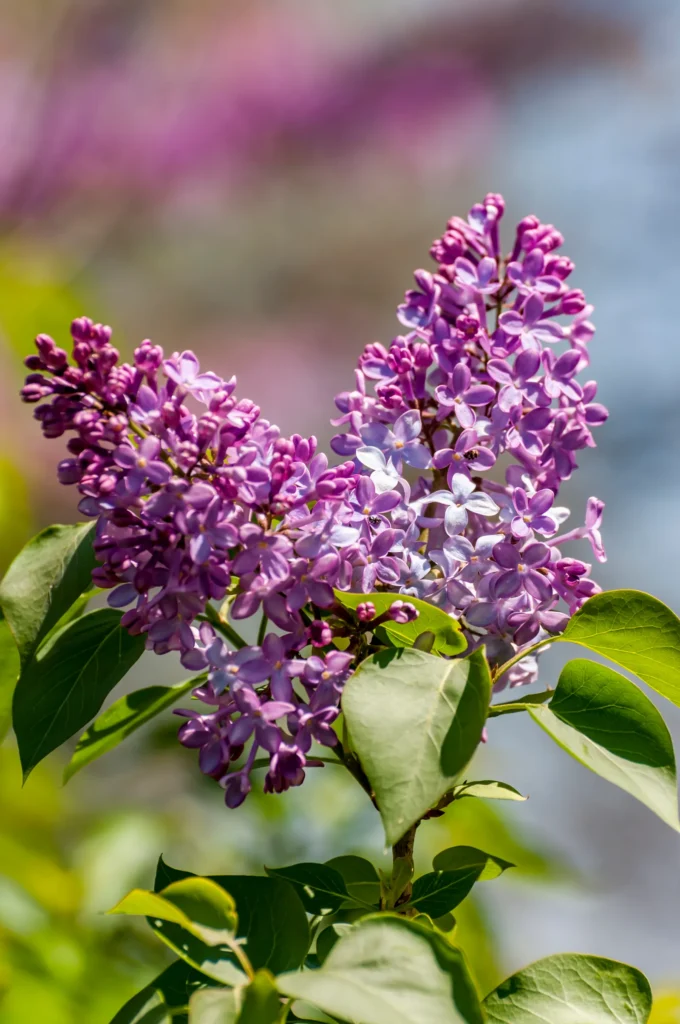
- Spring: Fertilize, prune after bloom, and mulch.
- Summer: Water during dry periods and keep an eye out for pests.
- Fall: Add compost or organic matter to enrich the soil.
- Winter: Lilacs are hardy, but adding mulch helps protect roots in colder regions.
Propagating Lilacs
Want more lilacs in your yard without buying new plants? You can propagate them in several ways:
- Suckers: Lilacs often produce shoots from the base. Dig these up with roots attached and transplant them.
- Cuttings: Take softwood cuttings in early summer and root them in a moist medium.
- Grafting: Some rare varieties are propagated by grafting onto hardy lilac rootstock.
Companion Plants for Lilacs
Lilacs pair beautifully with many other plants in the garden:
- Peonies: Bloom around the same time and complement lilacs’ fragrance.
- Tulips and Daffodils: Early-blooming bulbs that add spring color before lilacs flower.
- Hostas: Provide attractive foliage at lilac bases.
- Roses: Offer extended blooming into summer, balancing the lilac’s short flowering season.
Common Mistakes to Avoid
- Planting in shade: Lilacs need full sun to bloom well.
- Overfertilizing with nitrogen: Leads to lush leaves but few flowers.
- Pruning too late: Removes next year’s flower buds.
- Ignoring airflow: Crowded or shaded areas can lead to powdery mildew.
Enjoying Your Lilacs
Once your lilacs are established, you’ll look forward to their fragrant blooms every spring. They’re perfect for:
- Cut flower arrangements: Lilac blooms make stunning bouquets.
- Attracting wildlife: Butterflies, bees, and hummingbirds love them.
- Creating hedges or screens: Tall lilac varieties can provide privacy and beauty.
Conclusion
Growing lilacs is a rewarding experience that brings both beauty and fragrance to your garden each spring. With the right variety, proper planting, and a little seasonal care, lilacs will flourish for decades, filling your yard with color and scent.
Whether you choose a classic common lilac, a compact dwarf variety, or a striking tree lilac, you’ll enjoy a low-maintenance, high-impact plant that symbolizes renewal and joy. For busy gardeners who still want a touch of elegance, lilacs are truly one of nature’s most enchanting gifts.
So, if you’ve been dreaming of filling your spring garden with fragrance and color, now is the perfect time to plant lilacs and create a blooming legacy that will last for generations.
